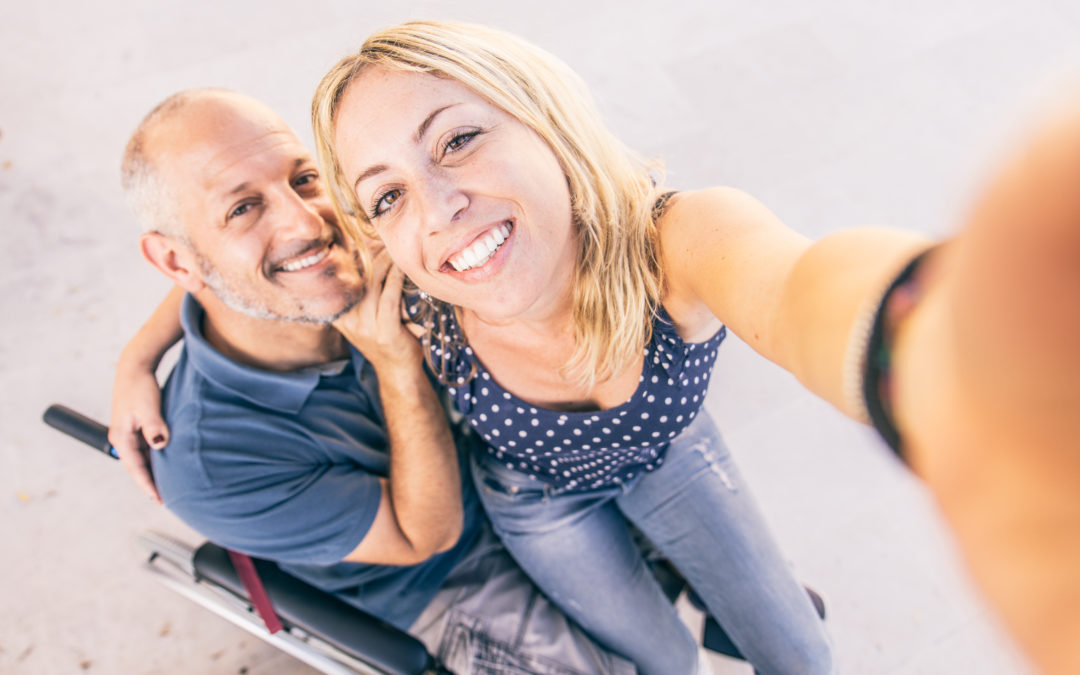Five Reasons to Consider User-Generated Content Campaigns for Healthcare PR and Marketing
Most marketers and communicators are familiar with the term User-Generated Content (UGC), referring to content created by the end-users of a site and posted publicly. Most of these contributors are fans posting images, videos, tweets, testimonials, and comments about brands or organizations they favor. But it’s not just consumers who are involved with UGC these days. From customer reviews to contests and user-driven movements, companies are increasingly creating campaigns using customer-produced content to the advantage of their brands.
Fast Company spoke in 2015 with leaders from businesses on its list of Most Innovative Companies in Marketing. Among their 25 predictions for what marketing would look like by 2020, they foretold that “most branded content will come from consumers.”1 It seems these marketing gurus must have had their collective finger on the pulse of what customers want. Not long after that article, an expert source on UGC initiatives found that 70 percent of consumers trust online peer reviews and recommendations more than brand-created content.2
Many think of UGC campaigns as a vehicle used primarily by consumer product companies. However, they can also be a valuable resource in healthcare PR and marketing efforts. Here are five reasons your healthcare brand or organization should give UGC strategies serious consideration:
User-Generated Content is engaging for patients, families, and caregivers because it capitalizes on the power of human stories.
In health care, virtually any UGC post by a patient, whether a three-line review or a five-minute testimonial, tells a story. At its heart, UGC is patients sharing stories.
More and more, marketing and PR experts are emphasizing storytelling, which is really about capturing attention and engaging customers. But why are stories effective at engaging customers?
First, people love stories because they can relate to them. In health care, we identify with a patient’s story because we all know what it’s like to experience health challenges or to care about someone who does. If you have the same condition as a storyteller, their story not only grabs you but has you hoping for a solution.
People also love patient stories because they crave reality. Real stories convey authenticity and genuineness, which in turn, beget trust and credibility. And when your brand showcases UGC patient stories, audiences naturally attribute a measure of that credibility to your brand simply because of your support and association. (For more on authenticity and how people want to hear from people like themselves when learning about a company, see our post on the power of testimonials.)
Finally, people love stories because they love journeys. Last year, Microsoft’s Chief Storyteller, Steve Clayton, spoke to a group of PR and marketing people at a social media conference. He discussed how the brain is hard-wired to remember stories rather than facts or data.
“When is the last time you went to dinner and said, ‘Let me tell you about this data’? No one does that,” he said. “They say, ‘Let me tell you a story…”3
Stories are memorable because they offer the possibility of learning something new. They can take you on a journey (of the mind) to a place you’ve never been. This is true when children listen to storybooks or when adults watch movies, read books…or view UGC. The anticipation of hearing a patient story not only interests us but renders us susceptible to inspiration and emotional appeal. With those ingredients, the table is set for audience engagement.
Creating User-Generated Content empowers patients to use their condition to create something positive as an alternative to simply being controlled by it.
For patients who are fans of a particular healthcare solution and are open to contributing content, UGC initiatives are compelling because they let patients play an active role with regard to their condition. This is important because, beyond the physical distress of living with illness, a major challenge for many patients is feeling that they’ve lost control. Day to day, it can seem that they’re simply at the mercy of their disease. This can be true, whether it’s cancer, heart disease, diabetes, asthma, or any other long-term sickness.
So, when a patient finds a healthcare solution that helps them regain some ground by improving their health or helping them better manage their disease, it’s not unusual for them to want to share their story through blogging, tweeting or sharing images and videos.
Besides their own inspiration, many patients appreciate how UGC lets them encourage others struggling with the same condition. In fact, posting content to help others can take on special significance for UGC contributors. While trying to make sense of their sickness can be frustrating, UGC contributors who share their personal stories and what they’ve learned create something positive, which for some, can actually give a sense of meaning to their condition. They share their story with the intent of helping other patients and families going through the exact same thing.
Contributing to User-Generated Content can also provide patients and their families a sense of community.
On one UGC campaign my team created a few years ago, the non-profit organization partnering with my client company was an online community aimed at helping people with diabetes not feel so alone.
Posting UGC allows contributors to enlist in causes they support, consider worth their time, and see as bigger than themselves. UGC gives them a chance to join with others of like mind and do something that’s both good and important. It also allows them to be part of a movement that’s doing something about their condition. And when they join together with others on a common cause, it creates a sense of shared purpose and community.
It’s important to note that an organization that develops and sponsors UGC efforts can actually foster this sense of community. When it does, it stands to grow its equity as a brand that listens to patients, because it has created forums through which patients can share their stories.
Creating and supporting User-Generated Content initiatives is positive for brands and product categories because UGC initiatives are fan-driven.
When brands develop creative UGC campaigns, they naturally attract brand fans and champions. That’s because such initiatives are structured to solicit stories, images and videos of users’ positive brand experiences.
In addition, UGC campaigns can be structured from the outset to deliver content submissions that reinforce the brand’s messages. This is possible because many fans, while willing to contribute UGC, aren’t sure what to share, and they’re seeking guidance. An article about UGC in Adweek last year pointed out that more than half of consumers say they want some kind of direction for developing reviews and other UGC. In fact, they want it from—believe it or not—the brands themselves! Nevertheless, the article noted that only 16 percent of brands provide direction.4
In other words, most customers are saying, “Tell me what content you want and I’ll give it to you.” Surprisingly, less than one in five brands are taking them up on the offer. Talk about missed opportunities!
(For an example of a healthcare sponsor shaping an initiative to deliver UGC that drives its messages, check out the award-winning “Thanks to an LVAD…” campaign. SignalWest Public Relations recently developed and implemented the campaign for one of its medical device clients.)
Conducting a User-Generated Content campaign can be a fruitful venture for a brand or product category, revealing patients and stories that are hidden gems.
I remember my years in diabetes medical devices before UGC was prevalent. Finding a patient for a testimonial meant conducting a hit-and-miss hunting expedition that hinged on our Field Sales team helping us identify candidates. Due to our determination and our field force’s reach, we were able to find patients when we needed them. The process, however, took a lot of legwork.
First, you needed a Sales colleague willing to partner. Then, even though top-prescribing doctors were Sales’ main source for patients, you had to hold out for a strong patient story–having the “right doctor” isn’t enough. As stories were about healthy living with diabetes, a patient’s diabetes had to be well-managed. Appeals to patients had to go through doctors to protect patient privacy. And the list went on…
With all these boxes to check, you can see how the list of potentials got winnowed down pretty quickly.
Fast forward to today…Even though the main purpose of UGC campaigns is increasing awareness or engagement, a great byproduct is the rich “talent” pool they produce. Campaigns reveal potential patient testimonials and patient ambassadors that can be tapped for other marketing efforts. And if your UGC effort is a contest with winners or a campaign featuring noteworthy submissions, you have a built-in screening process producing candidates who’ve already met your testimonial’s main criterion—a good story. What may surprise you, though, is that you won’t just get good stories—UGC efforts can produce great stories.
What’s been your experience with UGC campaigns and what stories have they produced? What have they done for patient engagement with your brand or for supporting patient communities in your product category? Share your insights on UGC in the comment section below. We’d love to hear them.
*********
(Afterthought: While Mark Twain said, “Truth is stranger than fiction,” UGC submissions show that truth can also be better than fiction. For an example, check out the winning videos on the “Thanks to an LVAD…” YouTube channel.)
Endnotes
1 Beer, Jeff. “25 Predictions for What Marketing Will Look Like in 2020.” Web newsletter post. Fast Company. Fast Company & Inc, 4 March 2015. (https://www.fastcompany.com/3043109/25-predictions-for-what-marketing-will-look-like-in-2020)
2 Gotter, Ana. “38 Mind-Blowing Stats About User-Generated Content.” Web blog post. TINT, 13 Sept 2016. (https://www.tintup.com/blog/38-mind-blowing-stats-effectiveness-user-generated-content/)
3 Dziuban, Michelle. “The Power of Storytelling in PR.” Web newsletter post. Cision, 14 March 2016. (http://www.cision.com/us/2016/03/the-power-of-storytelling-in-pr/)
4 Morrison, Kimberlee. “Why Consumers Share User-Generated Content.” Web post. Adweek, 17 May 2016. (http://www.adweek.com/digital/why-consumers-share-user-generated-content-infographic/)



